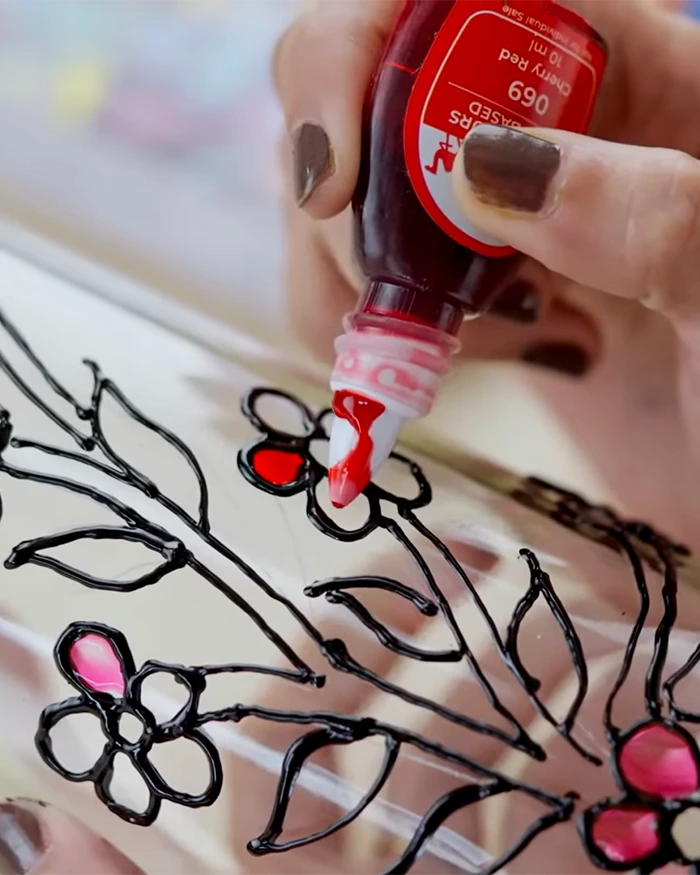Many people like to paint with acrylic colours because they are highly pigmented, dry fast and are easy to use. They are pigments suspended in water-soluble acrylic polymer media that become water-resistant once they have dried up. You can paint on many things like canvases, papers, wood, clay pots or fabrics using acrylic paints.
What makes Acrylic Colours special?
Acrylic colours dry super fast. Oil paints take forever, but acrylics are ready in no time. This is great if you like to paint fast or add layers to your artwork. You can use acrylics on different surfaces. Acrylic paints are water-resistant. Once dry, the paint stays put or you can scrape it off if required.
How do you paint with Acrylic Paints?
Acrylic paints dry faster than oil paints or watercolours, so you need to work with these paints a lot faster. As a beginner, here is how you paint with your acrylics.
1. Set up your paint station
Start by choosing a good place to paint. Find a big and open space to paint. Cover the floor with a carpet or cloth to catch any spills. Then, get your paints, brushes, palette, water, and paper towels ready.
Question: Should you buy student-grade or professional acrylic colours?
You can invest in Camel Acrylic Colours as a beginner. They are compatible with multiple surfaces like paper, canvas, wood or any porous surface. The Camel Artist Acrylic Colours range is best suited for canvas painting. They are ideal for artists experimenting with their aesthetic style of painting as well as professional artists.
2. Prime your canvas
Camel Canvases are pre-primed and ready to use. You can paint them right away. But, to make your canvas unique, you can add Camel Acrylic Gesso before you start painting. Gesso helps create textures and makes Camel Artist Acrylic Colours look brighter. It also helps the paint stick better.
3. Practice with your Acrylic Paints and Brushes
Before starting your painting, get familiar with your painting materials. Get a feel of how the paint applies, how quickly it dries, how it sets on your canvas, and how it blends with other colours. Acrylics dry quickly, so this will also give you a chance to test your techniques.
4. Create a rough sketch
This is purely up to you, but if you feel that lightly sketching the drawing with a pencil on the canvas will be of help, then go right ahead. The major features of the painting should be lightly drawn using a soft pencil such as Camlin Drawing Pencils. The soft pencil will serve as your guide while painting and will provide you with a base to work with.
Tip: If you think that drawing on a canvas with a pencil will be messy, trace the drawing on the canvas using tracing paper or apply a grid technique.
5. Start painting
Now that your canvas is ready, it is time to start painting. When you are working with artist acrylic paints, it is best to begin with mild strokes and build up to darker colours. This layering technique creates depth in your artwork.
Tip: Acrylics dry fast; mix colours quickly on your palette. Use a water spray bottle to keep your paint wet on your palette as you paint.
Question: Can I blend two or more acrylic paints to get new colours?
Yes, most artists blend acrylic colours. You can mix colours on your palette to obtain your own shades and tones. To change a colour's vibrancy, you can mix its complementary colour on the colour wheel. For example, to darken yellow, add purple. To lighten the blue, add a touch of orange.
6. Protect your artwork
Acrylic paints last well on their own, but you can still protect them further. Use a special spray called varnish. It seals your painting, making it shiny or matte. Try Camel Picture Varnish Spray to protect your acrylic paintings.
Question: How to avoid acrylic paint from drying?
Spray water on your palette occasionally to keep the paint wet. If the colour dries out on your palette, add fresh paint or scrape off the dry bits and start over.
Tips from painting experts
If you are new to acrylic painting, try incorporating these tips:
- Use more water to make the paint look like watercolours. This is good for shadows and textures.
- Try dry brushing. Use a dry brush to make rough textures like trees or rocks.
- Dab paint on the canvas with a stiff brush to make things look bumpy, like leaves or sand.
- Use tiny dots of paint to make detailed textures. This adds depth to your painting.
- Layer colours to make your painting look deep. Let each layer dry before adding the next.
Question: How do you clean acrylic paints from your palette?
When you are done painting, let the acrylic colours dry completely on your palette. Then peel off the paint or scrape it away. Do not wash these paints down the drain, as they could clog your pipes.
Acrylic painting is a fun and versatile way to express your creativity. Using the right tools like Camel Acrylic Colours, canvases and Camel Picture Varnish Spray can help you create great art on any surface. If you are new or want to improve, try layering, blending, and adding texture. This will help you learn acrylics over time.
Want to start painting? Get your supplies, use your imagination, and create your masterpiece today.
Did this article help you learn something new?
Share your thoughts with us in the comments below.
Leave a comment
Comment added
Comment updated
Comment deleted
More inspiration
“
“Keep practicing.”





